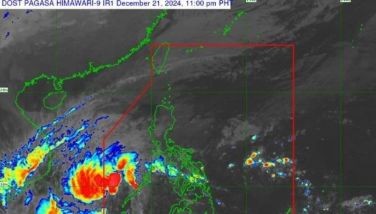Mangrove planting discussion slated in Bantayan today
CEBU, Philippines - Representatives from the government, commercial and environmental sectors will convene today in Bantayan, Cebu to tackle issues on the so-called “ecological sins” in Yolanda-hit areas in the province.
The Department of Environment and Natural Resources set the meeting to address concerns of various groups on the mechanism of planting and growing mangroves in Bantayan Island. The meeting will be held at 9 a.m. at the Bantayan Municipal Building.
“With the intention to clear out or explain the results of the Monitoring and Evaluation of the Mangrove and Beach Forest Development Project in Bantayan,” read the letter of DENR Regional Director Isabelo Montejo.
Montejo said in response to the opposition of marine scientists, non-government and coastal practitioners and commercial sectors that mangrove forest is also known as the “rainforest of the sea” as mangroves are an important part of the coastal and marine ecosystem that includes the seagrass and the coral reef.
The sectors alleged that DENR has planted wrong species of mangroves (Rhizophora) and is planting them on wrong sites just to justify with its coastal resilience program.
The Cebu Chamber of Commerce and Industry-Bantayan Chapter, in a resolution, also asked DENR-7 to remove all mangrove seedlings from seagrass areas in Bantayan, particularly in Luyong Baybay.
“Allowing this inappropriate activity will damage the natural ecosystem not only in the areas directly planted with bakhaw but even beyond,” the resolution reads.
CCCI-BC also said the continuous planting of mangroves will “further damage to the already degraded resource base (and in turn it) will exacerbate the decline in fisheries.”
Jurgenne Primavera, a Pew Fellow in Marine Conservation and co-chairman of IUCN Mangrove Specialist Group, said it is inappropriate to plant mangroves on seagrass beds, calling for a halt to the seafront planting of mangroves.
“For so long, Cebu and particularly Bantayan, have been the poster islands for wrong mangrove practices. It’s not too late to correct these wrongs, and to do right for the environment and for our people,” he said.
He recalled that the Philippine Association of Marine Science in 2003, 2005 and 2007 Science issued calls for the DENR and other organizations to stop such “wrong protocols.”
“After more than a decade, the “Tusok d Tongki” practice goes on with impunity,” he added.
He said seagrass beds are important as habitats themselves as they provide nursery and feeding grounds to marine turtles, seahorses, dugong and most coastal fishes and shellfishes.
Aside from being highly productive ecosystems, sea grasses also buffer waves, stabilize substrates and improves water quality. (FREEMAN)
- Latest






















